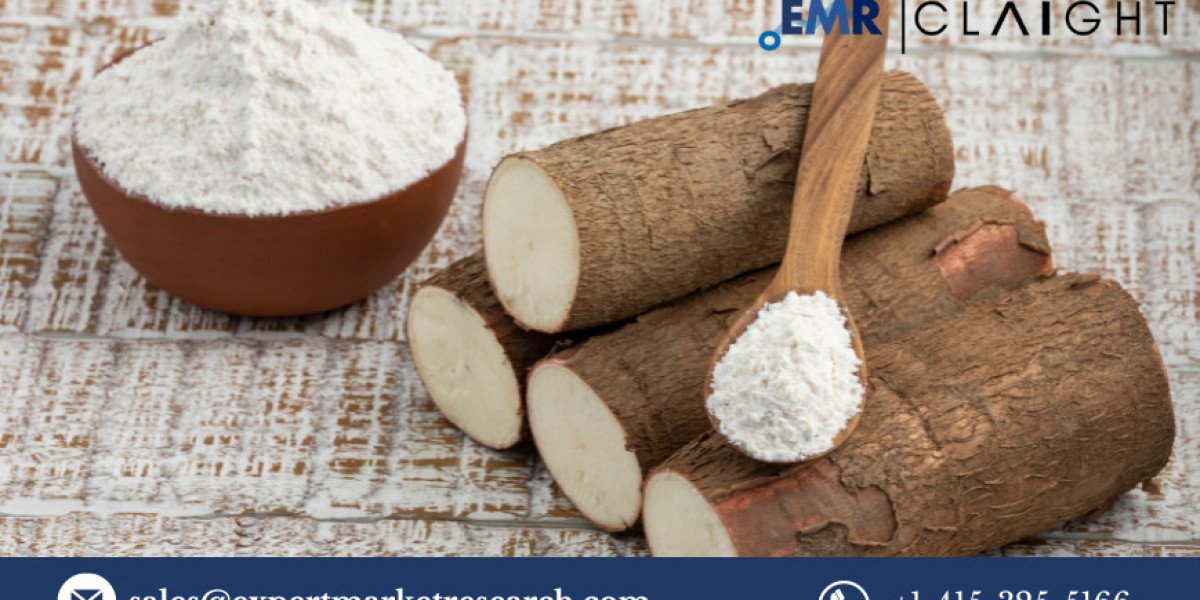The global native starch market is set to grow at a compound annual growth rate (CAGR) of 4.3% between 2024 and 2032. Native starch is a versatile carbohydrate ingredient derived from various feedstocks, including maize, cassava, potato, wheat, and specialty types such as high amylose maize and waxy maize. Its wide range of applications, particularly in the food industry, coupled with growing demand from non-food sectors, positions native starch as a significant player in the global market. This blog delves into the factors driving market growth, the diverse applications of native starch, regional market insights, and the competitive landscape.
What is Native Starch?
Native starch is a naturally occurring carbohydrate, primarily used for its thickening, texturizing, and stabilizing properties. Unlike modified starch, which undergoes processing to alter its chemical structure, native starch maintains its original molecular composition. The major sources of native starch include maize, cassava, wheat, and potato. These feedstocks account for a substantial portion of the global starch production, with maize alone contributing to nearly 72% of its composition.
Market Drivers
1. Increasing Demand in the Food and Beverage Industry
Native starch plays a vital role in the food and beverage industry, where it is used as a thickening agent, texture enhancer, stabiliser, and moisture controller. As global populations continue to grow and disposable incomes rise, there is an increasing demand for processed and convenience foods. The shift towards ready-to-eat and instant meals is particularly evident in developed and developing regions, making native starch essential in food items such as dry mix soups, processed meats, salad dressings, spreads, and pudding powders. As a result, the market for native starch is expected to grow robustly in this sector.
2. Expanding Use in the Textile Industry
The textile industry is another major application sector for native starch, where it is used as a sizing agent, colour thickener, and finishing agent. With the demand for sustainable and eco-friendly textile products on the rise, native starch is gaining traction due to its biodegradable and non-toxic properties. As industries globally focus on reducing their environmental footprint, the demand for natural alternatives to synthetic chemicals has grown, driving the expansion of native starch in textile applications.
3. Native Starch as an Alternative to Plastics
With increasing environmental awareness, native starch is also being used as a substitute for traditional plastics in certain applications. Bioplastics made from corn or potato starch are becoming a popular choice for manufacturers looking to reduce the environmental impact of their products. These starch-based bioplastics, which are fully compostable within three months, are used to produce disposable plates, cutlery, and packaging materials. This shift towards sustainable materials is expected to fuel further growth in the native starch market, particularly in regions with strong environmental regulations.
4. Growing Demand in the Pharmaceuticals Industry
Native starch is widely used in the pharmaceutical industry as a binder and filler in the production of tablets and capsules. With the increasing demand for over-the-counter medicines and the global rise in chronic diseases, native starch is expected to see continued growth in pharmaceutical applications. Its use in tablet formulation helps in the controlled release of active ingredients and ensures the stability and shelf-life of the product.
5. Increasing Application in the Paper and Adhesives Industry
Native starch is also a key component in the paper industry, where it is used as a sizing agent and as a binder in paper products. It improves the strength, texture, and durability of paper, making it suitable for a variety of packaging materials. The adhesives industry is another significant sector where native starch is used as a component in glue and adhesive formulations.
Market Segmentation
The global native starch market is segmented based on application and region.
By Application
- Food and Beverage: Native starch is used in a variety of food applications such as texturizing and thickening sauces, soups, and other prepared foods.
- Paper Industry: The paper industry uses native starch as a sizing agent to enhance paper quality and durability.
- Textile Industry: It is used in finishing processes and as a sizing agent to improve fabric texture and strength.
- Pharmaceuticals: In the pharmaceutical industry, native starch serves as a binder and excipient in tablet production.
- Personal Care: Native starch is used in personal care products for its thickening and stabilizing properties.
- Others: This segment includes applications in the cosmetics, agriculture, and other industries.
By Region
- North America: The United States is the leading market for native starch due to its significant production capacity and high demand in both food and non-food applications.
- Europe: The EU has seen a steady increase in starch production, with native starch accounting for a large portion of the total starch consumed. European countries are also focusing on sustainability, driving the demand for starch-based bioplastics.
- Asia-Pacific: This region is expected to experience the highest growth in the native starch market, driven by increasing food processing activities, industrialization, and the rising middle class in countries like China and India.
- Latin America: The native starch market in Latin America is growing steadily, supported by local agricultural production, particularly maize and cassava.
- Middle East and Africa: While the market is relatively small in this region, increasing industrial activities and food consumption are expected to drive demand.
Competitive Landscape
The global native starch market is highly competitive, with key players constantly innovating and expanding their operations to meet growing demand. Some of the prominent companies in the market include:
Cargill, Incorporated: A leading player in the global starch market, Cargill has expanded its production capabilities through strategic investments. In February 2020, the company invested USD 22.7 million in its Sas Van Gent starch production facility in the Netherlands.
Tate & Lyle PLC: A major global player in the food ingredients sector, Tate & Lyle has a strong presence in the native starch market, particularly in North America and Europe.
Ingredion Incorporated: Ingredion is a key player in the native starch market, offering a wide range of starch-based products for various industries. The company has also expanded its capacity for speciality ingredients through acquisitions, such as the acquisition of Western Polymer in March 2020.
Roquette Frères S.A.: A global leader in plant-based ingredients, Roquette offers a diverse range of starches, including native starches derived from maize, wheat, and potato.
Royal Avebe: A significant player in the European starch market, Royal Avebe is known for its high-quality starch products and focuses on sustainability in its operations.
AGRANA Beteiligungs AG: AGRANA is an Austrian company involved in the production of starch and other food ingredients. The company operates in several global markets and is expanding its product portfolio to meet evolving consumer needs.
Regional Insights
North America
North America, especially the United States, remains the largest market for native starch. The region's well-established agricultural industry, particularly maize production, supports the availability of raw materials for starch production. The demand for native starch is driven by its widespread use in the food industry, particularly in processed foods, as well as its application in bioplastics.
Europe
The European market for native starch has grown consistently, with an increase in both production and consumption. The shift towards sustainability has made native starch an attractive alternative in sectors such as bioplastics, adhesives, and paper. The European Union's focus on reducing plastic waste is expected to further boost demand for starch-based bioplastics.
Asia-Pacific
The Asia-Pacific region is anticipated to witness the highest growth in the native starch market, driven by increasing urbanization, rising disposable incomes, and the growing demand for processed foods. Countries such as China, India, and Japan are expected to contribute significantly to market growth.
The global native starch market is poised for steady growth, with applications spanning food and beverage, pharmaceuticals, textiles, paper, and bioplastics. As the demand for sustainable and eco-friendly solutions continues to rise, native starch’s versatility in various industries ensures its pivotal role in meeting consumer and industrial needs. With key players investing in production capacity and innovative product offerings, the future of the native starch market looks promising.
Read More Reports:
Australia Automotive Financing Market







